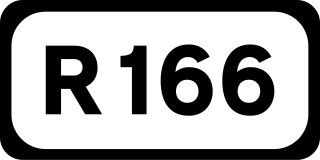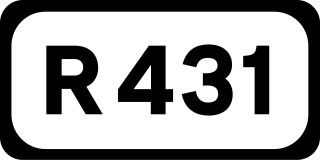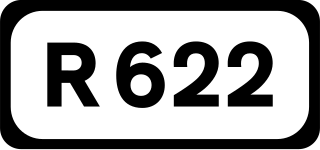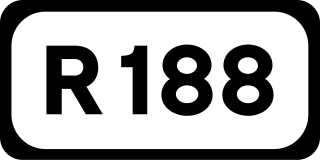Related Research Articles
A property tax is an ad valorem tax on the value of a property.
Stamp duty is a tax that is levied on single property purchases or documents. A physical revenue stamp had to be attached to or impressed upon the document to show that stamp duty had been paid before the document was legally effective. More modern versions of the tax no longer require an actual stamp.
Rates are a type of property tax system in the United Kingdom, and in places with systems deriving from the British one, the proceeds of which are used to fund local government. Some other countries have taxes with a more or less comparable role, like France's taxe d'habitation.

Taxation in Ireland in 2017 came from Personal Income taxes, and Consumption taxes, being VAT and Excise and Customs duties. Corporation taxes represents most of the balance, but Ireland's Corporate Tax System (CT) is a central part of Ireland's economic model. Ireland summarises its taxation policy using the OECD's Hierarchy of Taxes pyramid, which emphasises high corporate tax rates as the most harmful types of taxes where economic growth is the objective. The balance of Ireland's taxes are Property taxes and Capital taxes.
In France, taxation is determined by the yearly budget vote by the French Parliament, which determines which kinds of taxes can be levied and which rates can be applied.

The Libel Act 1843, commonly known as Lord Campbell's Libel Act, was an Act of the Parliament of the United Kingdom. It enacted several important codifications of and modifications to the common law tort of libel.

Most local governments in the United States impose a property tax, also known as a millage rate, as a principal source of revenue. This tax may be imposed on real estate or personal property. The tax is nearly always computed as the fair market value of the property, multiplied by an assessment ratio, multiplied by a tax rate, and is generally an obligation of the owner of the property. Values are determined by local officials, and may be disputed by property owners. For the taxing authority, one advantage of the property tax over the sales tax or income tax is that the revenue always equals the tax levy, unlike the other types of taxes. The property tax typically produces the required revenue for municipalities' tax levies. One disadvantage to the taxpayer is that the tax liability is fixed, while the taxpayer's income is not.
Mandatory tipping is a tip which is added automatically to the customer's bill, without the customer determining the amount or being asked. It may be implemented in several ways, such as applying a fixed percentage to all customer's bills, or to large groups, or on a customer-by-customer basis. Economists have varied opinions on the issue of mandatory tipping. Arguments against mandatory tipping include higher food price at the restaurant to make up for wages and loss of control of dining experience.
Irish law allows firearm possession on may-issue basis and the general public's access to firearms in the Republic of Ireland is subject to strict control measures that rank among the strictest globally. With approximately seven civilian firearms per 100 people, Ireland is the 107th most armed country in the world.
An Education and Training Board (ETB) is one of sixteen statutory local education bodies that deliver a wide range of education services in the Republic of Ireland. ETBs manage a large number of secondary schools, further education colleges and training centres, multi-faith primary schools and adult education centres throughout the country. They deliver a growing number of apprenticeships and traineeships across the State.

The False Imprisonment Act 1410 is an act passed by the Parliament of Ireland in 1410, during the reign of Henry IV as Lord of Ireland. The act covered false imprisonment.

The R477 road is a regional road in Ireland, located in coastal County Clare. It is a notable scenic route.

The R523 road is a regional road in Ireland, located in County Kerry and County Limerick.

The R166 road is a regional road in Ireland, located in County Louth.

The R398 road is a regional road in Ireland, located in County Longford.

The R424 road is a regional road in Ireland, located in County Laois and County Kildare.

The R431 road is a regional road in Ireland, located in County Laois.

The R622 road is a regional road in Ireland, located in County Cork.

The R188 road is a regional road in Ireland, located in County Cavan and County Monaghan.

The R266 road is a short regional road in Ireland, located in County Donegal.
References
- ↑ "Local Property Tax (LPT)" (PDF). www.revenue.ie. Archived from the original on 21 December 2012.
- ↑ "Budget 2022" (PDF). www.gov.ie.
- ↑ Valcheva, Kristina (3 February 2023). "Property Tax in Ireland: The Ultimate Guide for Landlords". www.ptireturns.com.
- ↑ "Household tax dodgers pay up as Revenue closes in". Irish Independent. 6 May 2013.
- 1 2 "Revenue says property tax from non-payers to be taken at source next week". RTÉ News . 2 August 2013.
- ↑ Book (eISB), electronic Irish Statute. "electronic Irish Statute Book (eISB)". www.irishstatutebook.ie.
- ↑ Book (eISB), electronic Irish Statute. "electronic Irish Statute Book (eISB)". www.irishstatutebook.ie.
- ↑ "Revenue Commissioners – Residential Property Tax". Archived from the original on 15 December 2012.
- ↑ Book (eISB), electronic Irish Statute. "electronic Irish Statute Book (eISB)". www.irishstatutebook.ie.
- ↑ Book (eISB), electronic Irish Statute. "electronic Irish Statute Book (eISB)". www.irishstatutebook.ie.